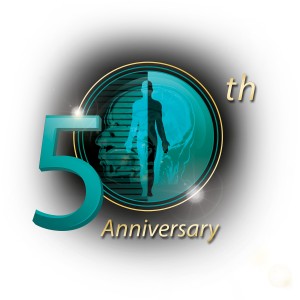 Lake Medical Imaging Achieves A Medical Milestone of Service
Lake Medical Imaging Achieves A Medical Milestone of Service
In 1965, when the Radiologists of Radiology Associates of Central Florida (currently Lake Medical Imaging) began reading films at Leesburg General Hospital (now Leesburg Regional Medical Center), diagnostic imaging was still in its infancy.
“We only had x-rays and nuclear imaging back then,” said Dr. Cathrine Keller. “X-rays were primarily used to see bones and large masses. There was no way to get good soft tissue images. There was no ultrasound, no magnetic resonance, and a mammogram was a major undertaking, involving moving the x-ray machine around a table where a patient was lying with her breast hanging over the side.”
Building on the Accomplishments of Those Who Came Before
Fifty years later, Drs. Keller and Michael Levine, who have provided 27 and 36 years of imaging excellence to the community, respectively, and their other 21 Radiologist colleagues at Lake Medical Imaging, give a great deal of credit to the philosophies and vision of the practice’s doctors who came before for helping this specialty achieve a new maturity…and for keeping the group at its forefront.
“Our founding doctors, including Drs. Ernie Wollin, Philip Gelfand and Michael Levine, created a very dedicated practice where the patient comes first,” said Dr. Keller. They were great leaders, great mentors. ‘When in doubt’, they believed, ‘think of the patient like your mom.’ They also believed in treating every employee well, because ‘they are the team working together to take care of the patient.’
“Building on that philosophy, both in spirit and in practice, has given us the vision to see the future of imaging and the courage to bring it to our community, often before anyone else in the region and sometimes the nation. That is doing the very best for the patient,” she added. “It all goes back to that.”
To bring imaging innovations to the community, Lake Medical Imaging’s doctors have looked all over the world, and chased best practices to some interesting places.
How The Beatles Funded the CT Scan
In 1962, right when it signed the Beatles, a researcher at EMI (which stood for Electrical and Musical Industries) and included the famous record label among its divisions, began conducting independent research with funding from the Beatles’ string of massive successes. One of those researchers went on to invent the CT scanner. He shared the 1979 Nobel Prize for medicine for his invention, which creates 3-D images of areas of the body.
“We even called our first CT back in the 70’s or early 80’s the EMI [pronounced Emmy],” said Dr. Keller. “We had to know computer programming to use it. Images were stored on old floppy disks that had to be turned over when they were full. Creating the images could take an hour, and at that time, couldn’t be manipulated. Today, imaging speed has made a huge difference. We can do full scans from the neck to the pelvis in less than a minute. Images can be viewed in great detail from every angle.”
You’ve Come a Long Way…Baby
In the 1960’s the principals of sonar (developed extensively during the Second World War) were applied to diagnostic imaging. Ultrasound uses high frequency sound waves which penetrate into the body and bounce off the internal structures and contours of the organs, and are turned into live pictures with the use of computers and software.
“Our original ultrasound machine was huge,” said Dr. Keller. It looked like a giant side-by-side refrigerator with an arm that had a lot of joints ending in a felt-tip marker type instrument. Scans of different body sections generated images and the computer joined them together. We thought, ‘wow, look at what we can see.’ It was a revolution when we could go from the articulated arm snapshots to real-time live scanning.”
Leesburg or Sweden?
In 1978, Dr. Levine was hired by Drs. Gelfand and Wollin from Mount Sinai Medical Center, in Miami. At the same time he was offered the job, he got approval to visit Sweden, where he had applied to learn more about interventional radiology techniques and to hone his skills. He received permission to go to Sweden for several months before coming to Leesburg. He also visited Virginia to learn additional techniques in angiography.
“I performed the first angioplasty of the iliac and femoral arteries, and was doing a goodly percentage of the interventional procedures,” said Dr. Levine. “The other imaging equipment was not very sophisticated. This was a turning point for our practice.
A History of Firsts
In the early 1980’s, the first imaging office was opened in the group’s small business office and featured ultrasound and a nuclear medicine camera. That led to the first full-service imaging center in Leesburg in 1985. The practice then added CT, the first MRI imaging, and much more.
“In 1992, as we looked at the growth of the community, we thought it would be a good idea to open an office in The Villages,” said Dr. Levine. “In 1999, we began a joint venture with The Villages before the hospital opened. We helped design the Sharon Morse Building’s radiology system and The Villages Regional Hospital’s radiology system. The decision was made to have a full digital office, and PACS (Picture Archiving and Communication System) was introduced to provide a way for physicians to view images remotely, eliminating the need to store a large number of images on film. It allowed us to stop utilizing film as much as possible, except for Mammograms.
Ultimately, Lake Medical Imaging opened facilities in The Sharon Morse Medical Center and three other locations in The Villages. After several years, the joint venture with The Villages was no longer a necessity due to changes in focus.
Then, in December of 2010, the physician partners at Lake Medical Imaging took the long-term relationship that the practice has shared with the hospitals one step further and entered into a joint venture with Central Florida Health Alliance.
“The partnership with CFHA has been very successful,” said Dr. Keller. “We’ve built two new offices since that time, and continue to grow with the parent organization of LRMC, where it all began 50 years ago, and TVRH in The Villages, where we’ve seen explosive growth of our practice.”
Lake Medical Imaging has a history of firsts. It was one of the first to introduce PET/CT to a private imaging center in Florida, the first to bring contrast enhanced spectral mammography to the state, and one of the first to introduce breast MRI. The group also was instrumental in bringing DaT scanning for Parkinson’s and an advanced MRI system to pinpoint prostate cancer to Florida.
As a result of its best practices, Lake Medical Imaging was named the first outpatient imaging center in the nation to receive the Diagnostic Imaging Center of Excellence (DICOE) designation from the American College of Radiology (ACR).
We Know Women
Lake Medical Imaging’s women’s imaging centers are unique, giving women the results of their digital mammograms before they leave the office.
“Years ago, we decided we would do a breast exam following review of each woman’s mammograms,” said Dr. Levine. “We realized that often women weren’t being examined by anyone and weren’t doing self-exams. If we needed to, we could get extra mammogram views and ultrasounds if we felt there was something that needed a closer look. If anything suspicious was noted on a mammogram, follow-up imaging could be done immediately, or a needle core biopsy scheduled quickly.
“We decided early-on that women should receive their results during the same visit,” said Dr. Levine. “This ‘patient-focused’ care reduces stress and eliminates weeks of anxious waiting. This is a very different way of treating women, and although, as Radiologists, it may not be the most efficient practice for us, it’s the right thing to do for our patients.”
In 2010, Lake Medical Imaging’s women’s imaging centers were designated “Breast Imaging Centers of Excellence” by the American College of Radiology.
Innovations In Patient Safety
“By developing ways to lower exposure to radiation – without compromising our diagnostic or treatment abilities – we’ve developed some of our field’s best practices right here at home,” said Dr. Keller.
She explains how colleague Yi Liu, MD, PhD has pioneered reducing radiation doses in CT Scanning and how all 23 of the practice’s radiologists have championed safeguarding patients.
“Radiation doses to most patients undergoing CT exams were already at a low 1/3 of the national recommended levels. Dr. Liu was able to reduce the dose additionally by up to 70% more in certain patients.” We’re also the first imaging center, locally, to routinely incorporate thyroid and breast shields, to distribute record cards to patients to track their radiation exposure, and to join the National Image Wisely (adult) and Image Gently (children) radiation safety campaigns.”
What’s next?
Lake Medical Imaging is carefully watching progress in the imaging revolution now centering on cellular organ function and metabolism that could result one day in cancer patients receiving more individualized care in a less invasive manner – using image guidance.
“We’re dedicated to promoting health,” said Dr. Keller. “For those who are not healthy, we want to be part of diagnosing them quickly and effectively. In some cases, we’re treating patients through our interventional procedures.
“Everything is built upon the past,” said Dr. Levine. “Our future has been built on the shoulders of those who came before. For 50 years, we never thought of ourselves as living in a small town. We’ve always wanted to be absolutely first rate, all the time. I think our patients really appreciate that.”




